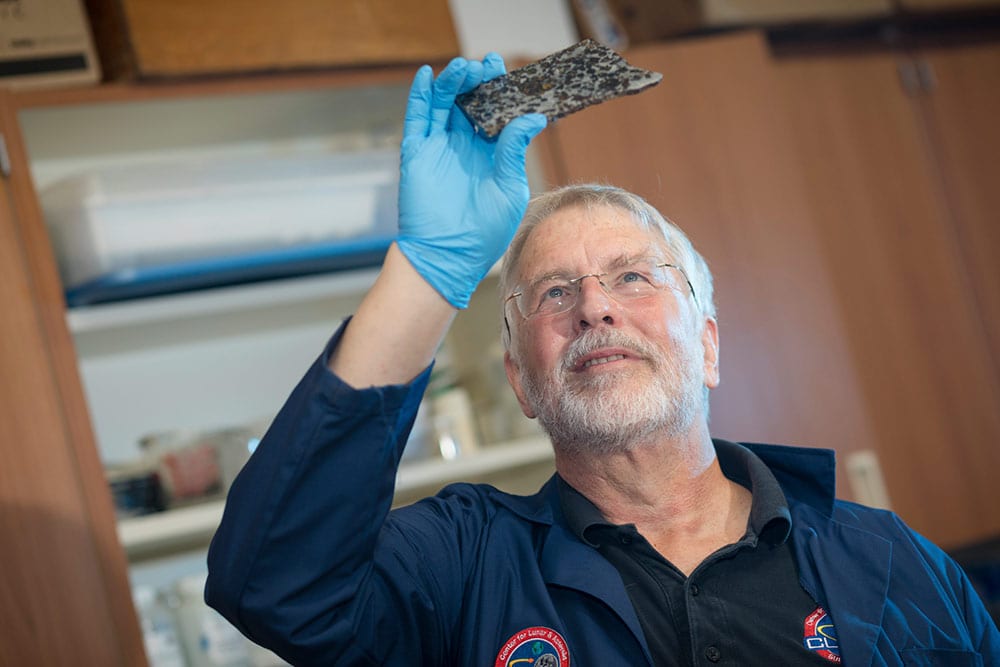UCF Professor Part of Team Awarded the Sir Arthur Clarke Award

By ZENAIDA GONZALEZ KOTALA
NASA’s New Horizons Mission Team, which includes UCF physics Professor Dan Britt, Thursday was awarded the 2019 Sir Arthur Clarke Award, one of the most prestigious space-exploration awards in the world. The award recognizes teams and individuals that have made notable or outstanding achievements in space activities in the past year.
New Horizons was selected for producing never-before-seen images of some of the most distant solar system objects including the spectacular images from the flyby of the Kuiper Belt asteroid 486958 Arrokoth (2014 MU69) that occurred in January. The 20-year-old mission also provided the first stunning images of Pluto and now the mission continues exploring the Kuiper Belt.
“It is quite an honor to be part of the New Horizons team,” says Britt, who joined the team in 2018. “These are some of the best people in planetary science, a combination of legendary veterans and rising stars, so I feel honored to be counted among them.”
New Horizons principal investigator Alan Stern — a former director of UCF’s Florida Space Institute and former associate administrator of NASA‘s Science Mission Directorate – accepted the award via satellite on behalf of the team Thursday night during the award ceremony at the British Interplanetary Society’s Reinventing Space Conference gala dinner in Belfast, Northern Ireland.
During his remarks, he shared how much Clarke’s work and writing deeply affected and motivated him as a child. The award was named after the British science fiction writer and futurist.
Britt said the team’s most important work is the reconnaissance of the outer reaches of the solar system. Images of Kuiper object 486958 Arrokoth for example, made the cover of the journal Science .
“We are creating a legacy of data and insights that will provide guideposts for future generations of explorers,” Britt says.
Britt has a long history of success driven by his desire to uncover the unknown. He has served on the science teams of four NASA missions – the Mars Pathfinder, Deep Space 1, New Horizons and the Lucy Mission. He was the project manager for the camera on the Mars Pathfinder and has built hardware for all the NASA Mars landers. His research focus area includes physical properties and mineralogy of asteroids, comets, the moon and Mars.
He is also director of the UCF-based Center for Lunar and Asteroid Surface Science, a node of NASA’s Solar System Exploration Research Virtual Institute. He has served as the chair of the Division for Planetary Sciences of the American Astronomical Society and the Planetary Geology Division of the Geological Society of America. Honors include six NASA Achievement Awards, election as a fellow of the Meteoritical Society, and an asteroid named after him, 4395 DanBritt.
